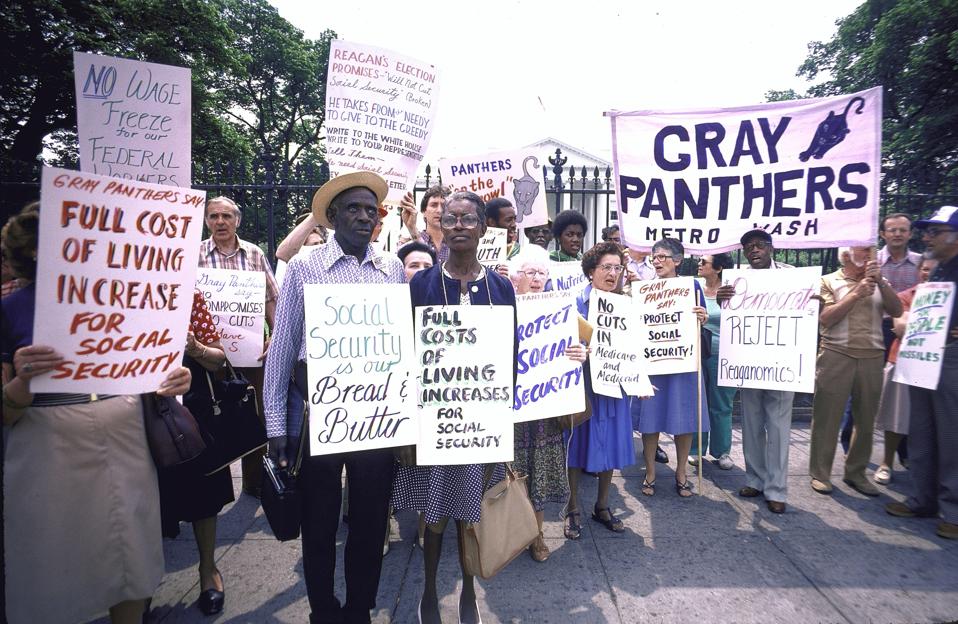As politicians and partisans debate how to make sure Social Security — an historically amazing and important program for the aging — has a secure financial future, one topic regularly brought up is the idea of delaying the retirement age.
It sounds reasonable. Just have everyone wait an extra year or two. How could that hurt? Well, because it’s actually a bait-and-switch suggestion which, if fully and honestly expressed, would really say, “All you have to do is wait maybe an extra two years and your payments will be about 7% less than they should have been otherwise.”
Sound confusing? That’s part of the point. A hat tip to Matt Bruenig, who pointed this out about a year and a half ago, and to the Social Security Administration, which explains in detail how they calculate retirement benefits.
Let’s start with the latter. Social Security retirement payments have a slightly complex structure, though for good reasons. The presumption is that you have worked for at least 35 years in your life (less possibly, more on that shortly) and paid a special Social Security tax.
The tax wasn’t squirreled away like a savings program. Instead, you’ve been paying money so those who have already retired can get payments. The reason is likely because of how the program started, which was as part of Franklin D. Roosevelt’s New Deal legislation during the Great Depression. If you were going to provide some retirement funds for people who were old enough to need them, you couldn’t go into the past and ask them to magically pay retroactively. It’s always followed that model. When you take retirement, it’s not money the government put aside for you. Instead, it comes from specialized tax payments people make today.
The Social Security Administration takes the 35 years in which you made the most money you did and then indexes each of them. That means, they compare what you made in each of those years, compares every annual amount to average wages at the time, and then calculate what they would have been worth given today’s average wages.
Next step is averaging those 35 years (or if you didn’t have 35 years, it adds the necessary number of years without income to get to 35 and then averages). A critical step is determining in what year you turn 62 based on the Consumer Price Index, or inflation. “For example, for a person attaining age 62 in 2023, actual earnings in 1990 of $20,000 are indexed to $57,613.78, on the basis of 2021 wage levels,” the SSA explains. “Earnings after age 60 are included at their actual (nominal) value.”
The actual year you can retire with full benefits depends on when you were born. If it was 1960 or later, you qualify for full benefits when you reach age 67. For birth years before, it varies. If you were born in 1955, then you qualify for full benefits at age 66 years and 2 months.
It is possible to take retirement before your full retirement age (FRA) — as early as 62. However, there’s a reduction of 5/9 of 1% (roughly 0.556%) for each month preceding FRA up to 36 months. Longer than that and each of those months sees a reduction of 5/12 of 1% (about 0.417%).
Wait, and there is an increase by month. (It gets very complicated through a series of SSA tables.) The amount can be significant, especially if you want until age 70, past which there are no increases.
Now we get to Bruenig’s point. For whatever year you’re born in, there is a line with a couple of slight bends in it on a graph. The graph shows the age of retirement on the horizontal line and the “primary insurance amount” (PIA, which almost seems like it had to be someone’s idea of an in joke), that amount you’re owed on your FRA. The horizontal line represents the 96-month spread in which you could take retirement, essentially 96 different retirement ages, only one of which is the official FRA. As the retirement age grows, so does the percentage of PIA you get. The number starts at a low point below 100% when you first could take retirement, grows to reach 100% at your FRA, then continues upward over 100% until you reach age 70.
If the government increases the definition of the FRA, your retirement payment graph essentially slides to the right and it takes longer to get to 100% of PIA, so at each month when you could retire, you get less money. As Bruenig noted, increasing retirement to age 68 effectively cuts benefits all along the line by 7% compared to what you’d have received with an age 67. Move retirement to 70 and the comparative cut is about 23% of benefits.
When you hear politicians, pundits, and activists talking about increasing retirement age, they’re really saying that your retirement should pay that much less.

